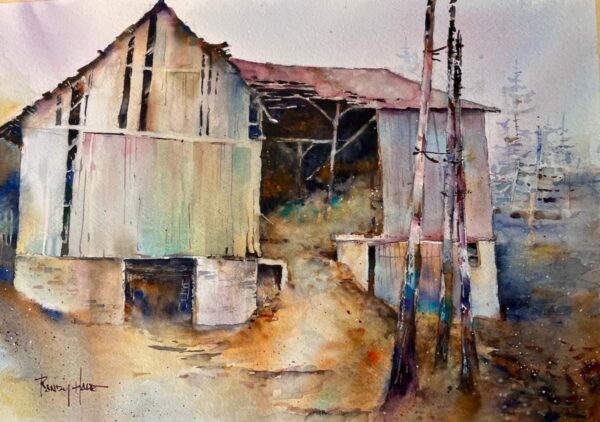
What makes a good painting? That was a question asked by Watermill tutor Randy Hale in his latest newsletter. Paintings like Randy’s the Hay Barn above, which just won first place in the Colorado Watercolor Society’s State exhibition. The juror, incidentally, was another Watermill tutor, Keiko Tanabe.
Randy says that when doing a critique of a painting, or selecting one to submit to a show, there are important questions to ask:
Have you WOW’d me?
“A good painting needs to capture the viewer’s attention. To be an attention-getter there has to be something there to make the viewer stop and take a second look. Yes, this may be subjective, but if the painting doesn’t have some sort of WOW-factor, the viewer – and the judge – will pass on by.â€
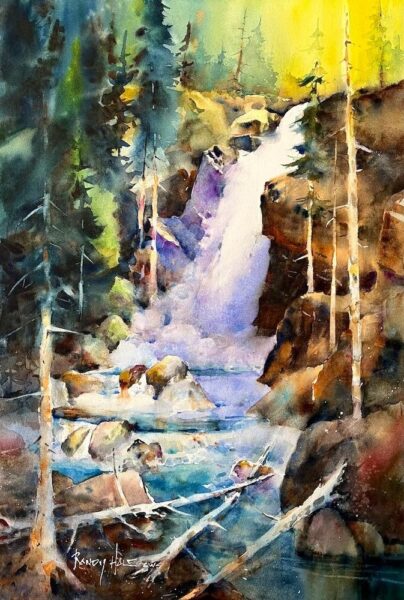
Is it a strong composition
“Paintings that are successful are ones where the artist has put some thought and planning into how the space is designed and developed. Have you led the viewer’s eye to a landing spot in the painting? Is this the important and obvious place where one wants to linger and explore? What has the painter done with the rest of the painting that keeps the audience returning to the focal point?â€
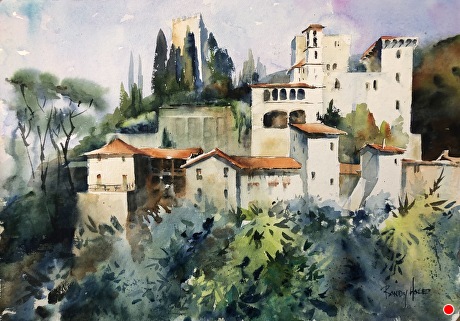
How innovative is the work?
“Always look for the indications the artist has taken some risks – perhaps an audacious combination of colors, a subjective portrayal of objects, or steps that establish some distancing from reality. Did the artist push beyond any obvious boundaries?â€
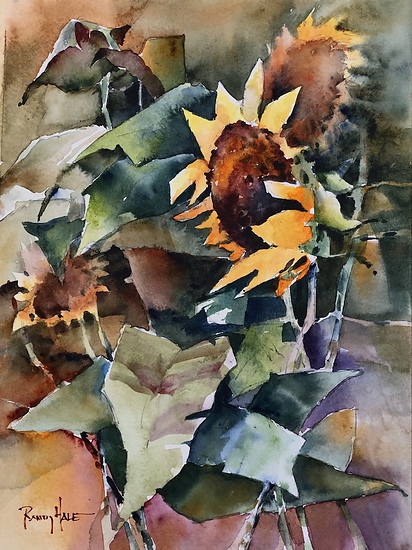
Randy says that once a juror recognizes something is unique or different about a piece, additional criteria inevitably come into play: “A winning painting must exhibit a full range of values. It must make use of lights and darks. Developing an overall temperature as well as a unified color palette should be apparent. Shapes in every painting need to have a range of sizes – a singular dominant shape ought to be supported by a few medium-sized shapes, and those anchored by multiple smaller shapes – all of which must be varied. Does the painting avoid predictability or repetition?â€
Randy adds: “To a juror it’s very apparent if attention and thought has been given to the entire surface area of a painting, or if parts simply got left a bit undeveloped. Mastery of technique, brush handling, and overall command of the medium are paramount. Solid paintings need to exhibit confidence. And confidence only comes with lots of brush-time.â€
Finally, HOW did the painting engage the viewer?
“Heightened drama or added tension always captures attention. What raw emotional connection did the painter inject into the work? Where’s the story, narrative, or undercurrent of mystery in the work that keeps the viewer coming back for that second or third LOOK? A juror can readily identify these subjective enhancements that make a painting successful, just as easily as identifying when they’re missing in other more pedestrian paintings. The question is – can you?â€
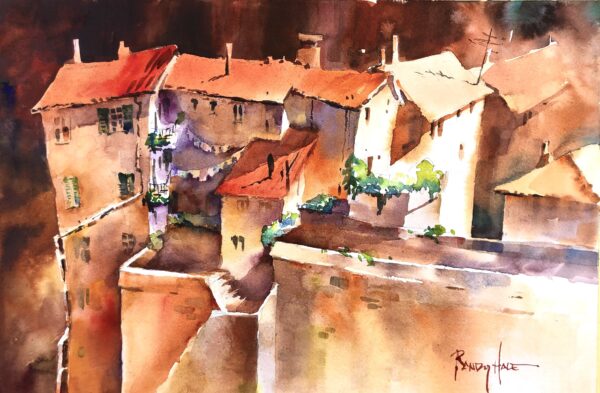
Randy concludes: “Painters need to always be looking at their own work objectively. Always be evaluating how successful you were with each painting you do. Use the criteria I’ve spelled out here to help set the bar for your own workâ€
Come and learn more about how to make your own winning pictures from a man who knows all about it. Randy will be with us at the Watermill next year from Saturday 13 May to Saturday 20 May 2023 and five people are already booked in. So now is the time to reserve your place especially since if you book before the beginning of September 2022 you can enjoy Randy’s 2023 course at this year’s prices.
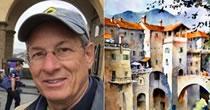
Randy Hale – five places already booked
13 – 20 May 2023
Watercolours
To learn more about Randy and his course at the mill, please visit his 2023 Tutor Profile page.